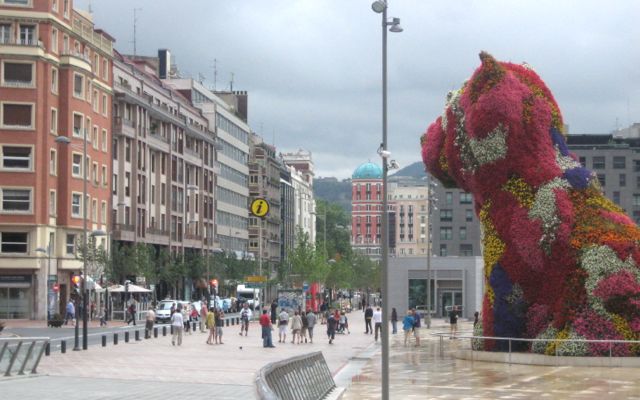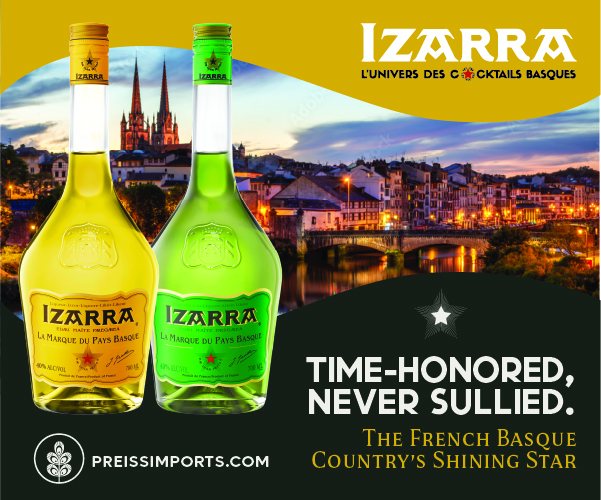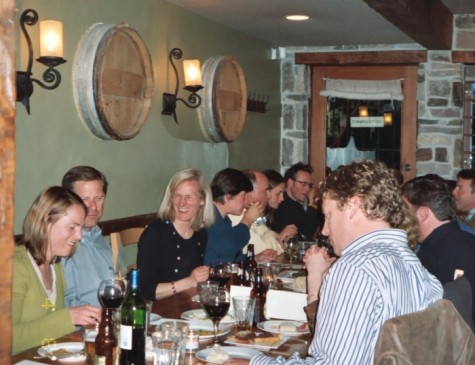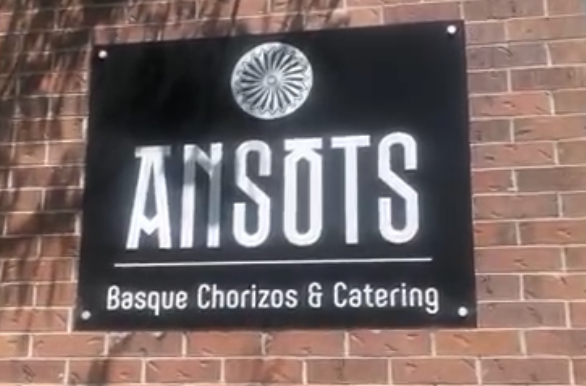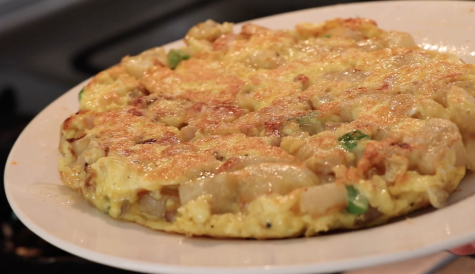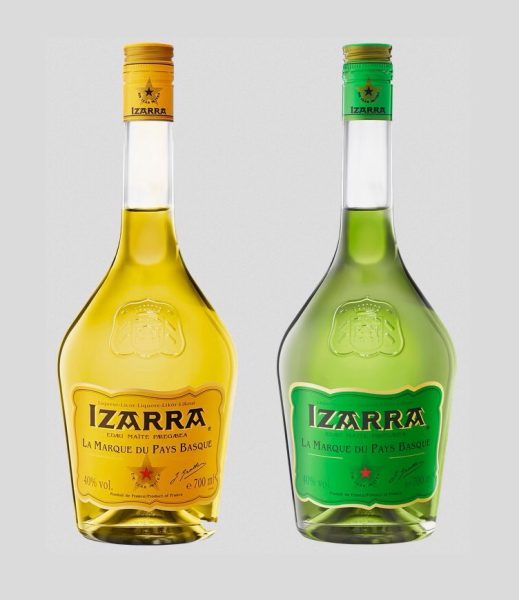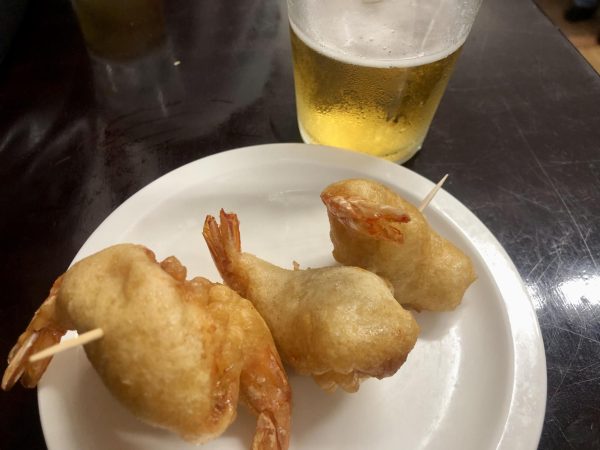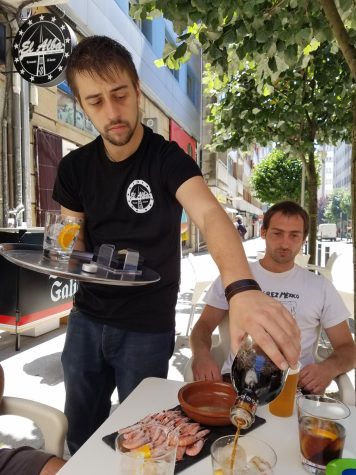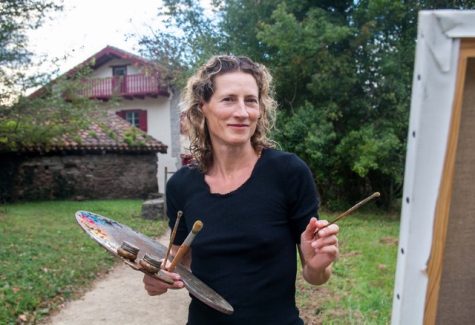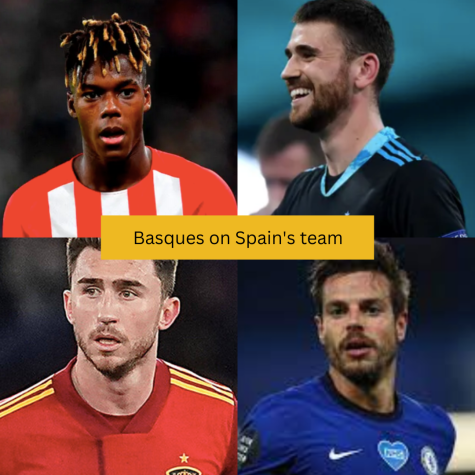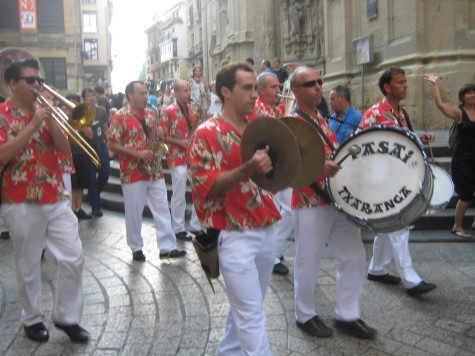What to See in Bilbao
January 30, 2015
Bilbao is the largest city in Spain’s Basque Country. Some of the places visitors should visit here include the Guggenheim Museum, the beautiful scenery along the Nervion River, the Casco Viejo (old town) and the Mallona stairs.
Bilbao is the capital of the Basque province of Bizkaia. It has a population of about 350,000, but increases to 1 million if the greater urban area is included. It’s pronounced Bilbo in the Basque language.
It was once a very industrial city with a polluted river, but this formerly gritty port city has undergone a major renovation, spearheaded by the construction of the Guggenheim Museum in 1997. Read our story about “The Bilbao Effect,” about the positive change the museum generated in this formerly industrial city.
EUSKAL KAZETA RELATED ARTICLES
“The Bilbao Effect – The Renaissance of a City Through Art.”
What to See in Donosti (San Sebastian)
The City of Bilbao: A Revival and Evolution
Basque Identity and Athletic Bilbao’s Success
During the 19th and early 20th century, Bilbo was the second most important industrial city in Spain, after Barcelona. Its salience began with the discovery of iron the the mountains around Bilbo and the exportation of the iron to other countries through the port. With its current renaissance, Bilbao has maintained its influence, now as a hip, trendy spot to visit.
The Guggenheim Museum
The construction of the Guggenheim, which opened in 1997, has brought millions of new visitors to Bilbo. The biggest Basque city has become a must-see stop for international travelers.
The best feature of the museum is without a doubt the building itself. Inside and out, the design creates different, magnificent views from every single spot. Architect Frank Gehry explains through the free multilingual audio guides offered to visitors that nothing except the floor is straight. All lines curve. Much of his inspiration for the museum’s design, he relates, came from the fish he brought home from trips to the market with his grandmother, then put into the bathtub until it was time to cook them.
The picturesque red La Salve bridge, which is a sight to see in its own right, leads down to a curving sidewalk around the building to the front of the museum, where a giant pink, red, yellow, purple and white-flower-covered “Puppy” greets visitors.
The Casco Viejo (Old Town)
Our visit to the museum led us to extend our visit to other parts of the city, as it should. After the Guggenheim, we went to visit the Casco Viejo, the original citadel where the city began, which dates back to the 15th century. The historic stone buildings flank the pedestrian-friendly walkways, similar to those of old Baiona and Donostia. We found good prices in the stores, including a couple of places that sold traditional Basque costumes and shoes.
Well-placed signs explained various historical points of the city’s old center, some which date back to the Late Middle Ages. Signs posted on barricades around ongoing construction of an obviously historic building note “Bilbao Berri” (new Bilbao). We had a hard time choosing a place to eat from the variety of bakeries, cafes and bars. By chance, we lunched late at a restaurant in one of the oldest buildings of the quarter – the Palacio Arana. Twin Hercules were carved in stone over the arched doorway leading to the building’s patio.
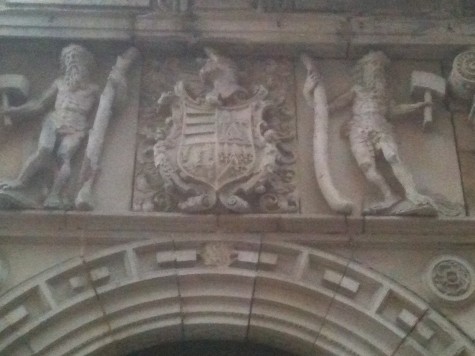
All aspects of our encounter with this city were extremely positive. We opted to fly in to the Basque Country via Bilbao, and after leaving the small, easily navigable airport with our rented Hertz car, we followed well-marked directions to the city.
Parking is Difficult, Unless the Police Help You Out
Street parking here is practically non-existent. While looking for a place to stop to look at my map in order to find our hotel, I pulled into a bus stop. Within 30 seconds, a police car had stopped alongside me. I told the two Aofficers in Spanish that we were looking for our hotel near the Jardines de Albia. The officer driving told me to follow him and led me through the city to the small park. He got out of his police car to point out the Jardines. When I asked him about parking, he told me “Sigueme (Follow me).” I followed them around the park in my rental car. He got out of his car again, told me to take the spot where a car was pulling out and pointed out a nearby hotel that might be mine. I asked him if all police here were so friendly and he admitted that probably not, “pero deberían serlo” (they should be). They waved away another car that wanted to take the empty spot, then drove away.
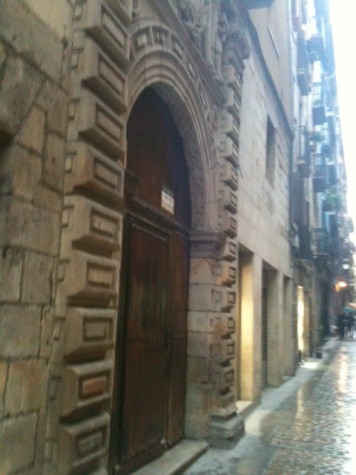
We had made our hotel reservations online, choosing the Spa Husa Jardines de Albia because of the economic prices it offered. We ate croquetas, bocadillo de jamon and tortilla de patatas at the Bitoques de Albia, a bar that has earned several awards in recent years for best pintxos. My daughter said the toasted croissants and hot chocolate we ate the next morning at the sidewalk café next to the Jardines was her favorite breakfast of the trip. But while we are not going to give you a list of the innumerable pintxo bars here, here’s a reliable list.
On the same street as our hotel we discovered the Gabriel Aresti Euskaltegia, a language school visitors can attend for short sessions to learn Euskera. I had been looking for just such a school so I can learn some Basque. A friend told me the Bilbao school is very well-known.
All in all, the Bilbao effect, coupled with the “Basque factor,” made our visit to this cosmopolitan city one we will readily repeat.

